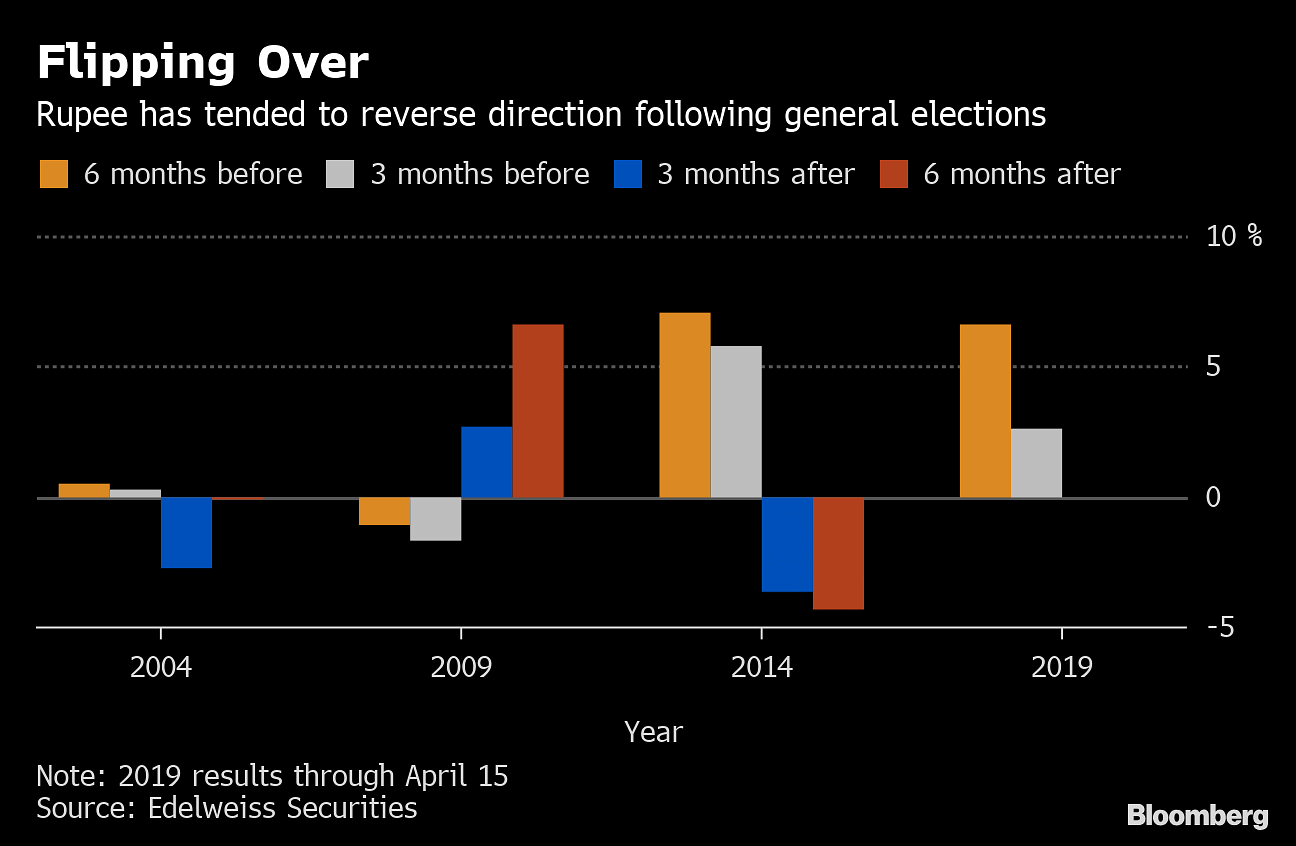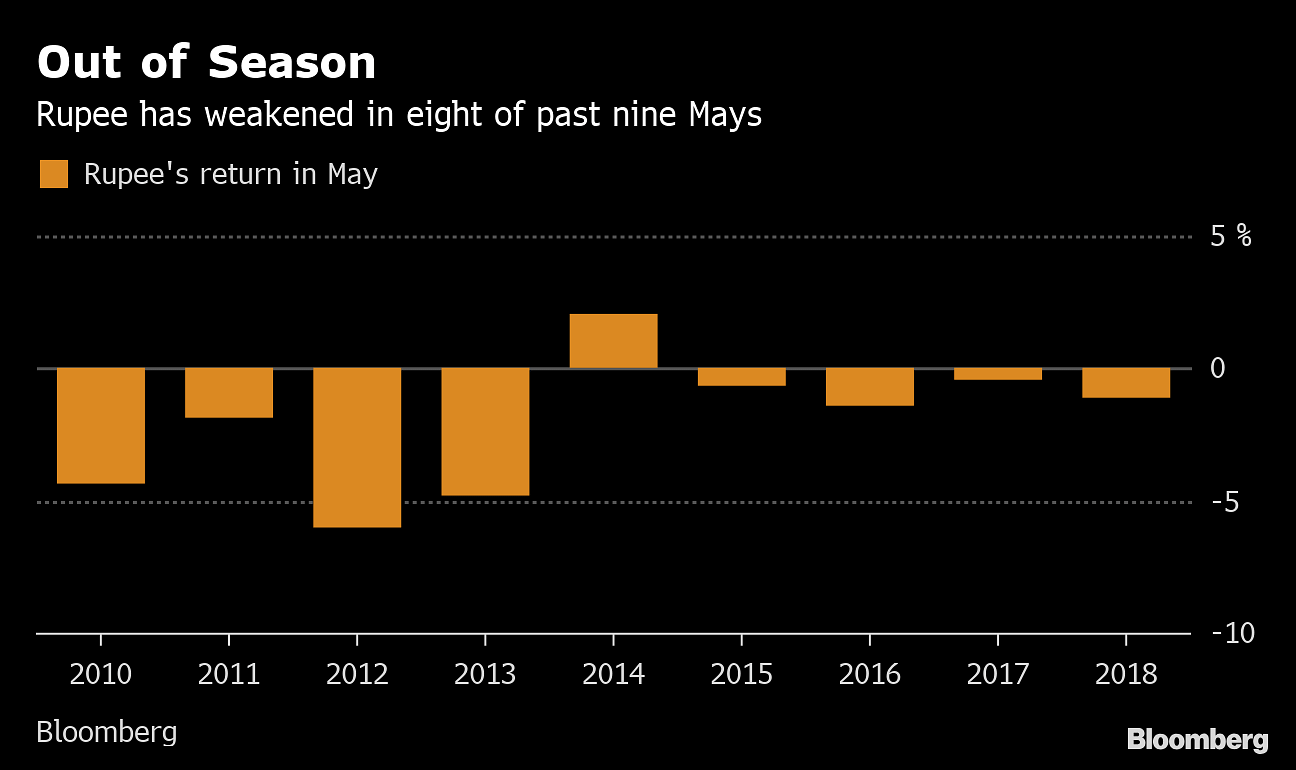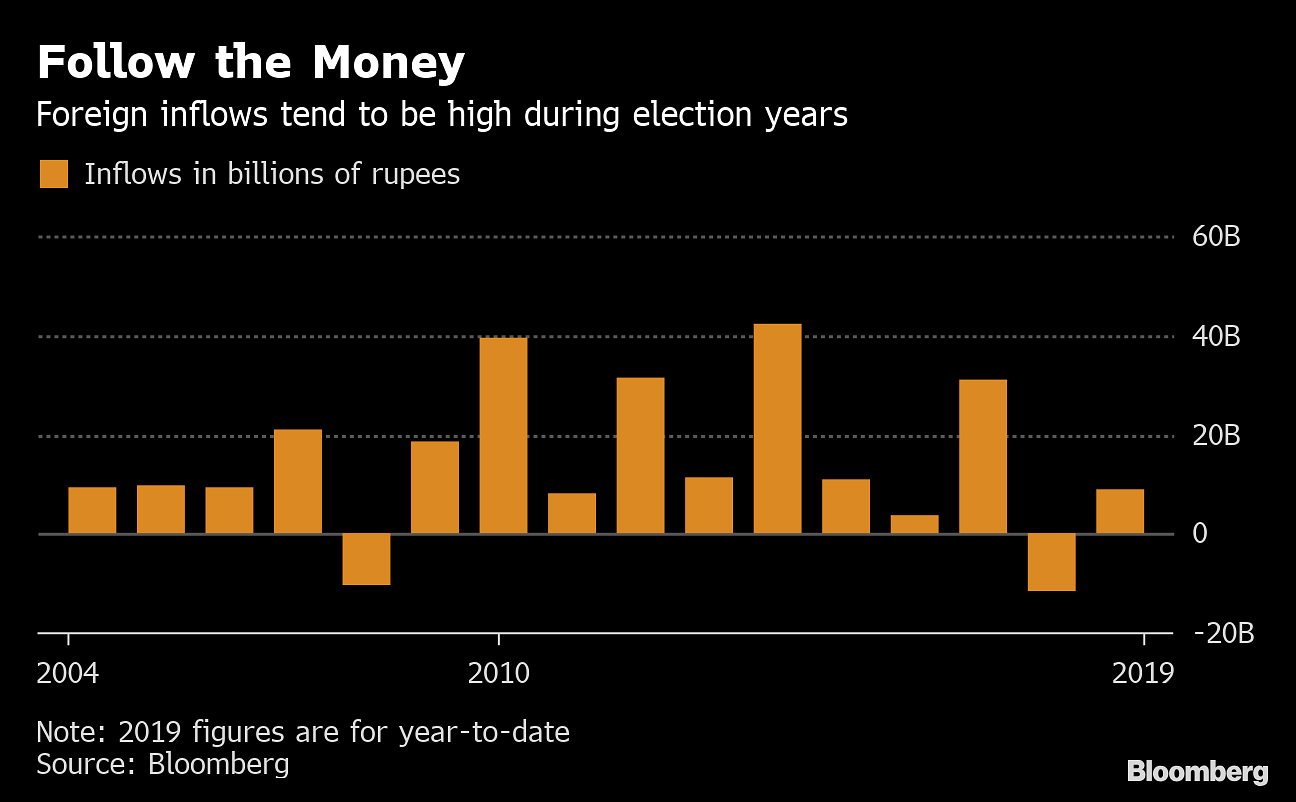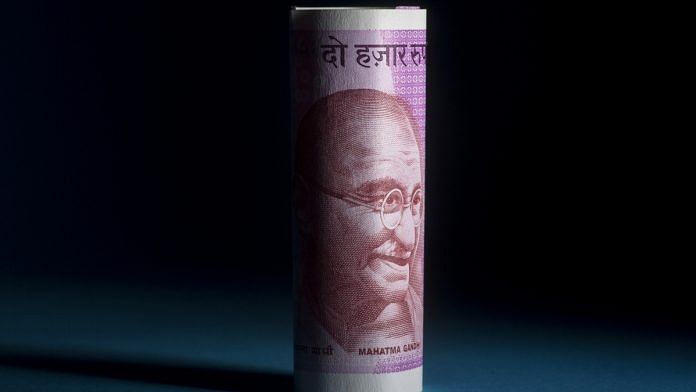Mumbai: In May, when election results are usually announced rupee has fallen eight times during the past nine years, dropping an average of 2.2 per cent.
India’s rupee has been Asia’s best-performing currency in the past three months but history suggests it will weaken once the current general election is over.
The currency has shown a tendency to flip directions after polls have been completed, according to a study by Edelweiss Securities Pvt, based on the past three election cycles. The currency has tended to reverse course when it has rallied ahead of the vote, said Madhavi Arora, an economist at the brokerage in Mumbai.

Seasonality is set to be an issue as well.
The month of May, when election results are usually announced, has proven to be an unfavorable one for the rupee. It has fallen eight times in that month during the past nine years, dropping an average of 2.2 percent. The exception was 2014, when Modi swept into power with the biggest mandate in more than three decades.

History also shows election years tend to see increased inflows from overseas. While foreign buying will depend on a mix of factors, including global developments, the influx seen during past election cycles provides some scope to be optimistic, according to Deutsche Bank AG, which may help the rupee.
Still, the German-based bank predicts India’s currency will weaken to 72 per dollar by year-end, Chief India Economist Kaushik Das wrote in a research note.

The rupee closed Tuesday at 69.605 per dollar, having strengthened 2.3 percent during the past three months. Indian financial markets were shut Wednesday for a holiday.- Bloomberg
Also read: Masala bonds are back while rupee strengthens & tax break lures buyers






